Tamago-Toji Udon is a classic Japanese udon noodle soup that is easy to prepare with eggs. The fluffy eggs and thick, flavorful dashi broth complement each other, and the subtle fragrance of ginger adds a delightful touch.
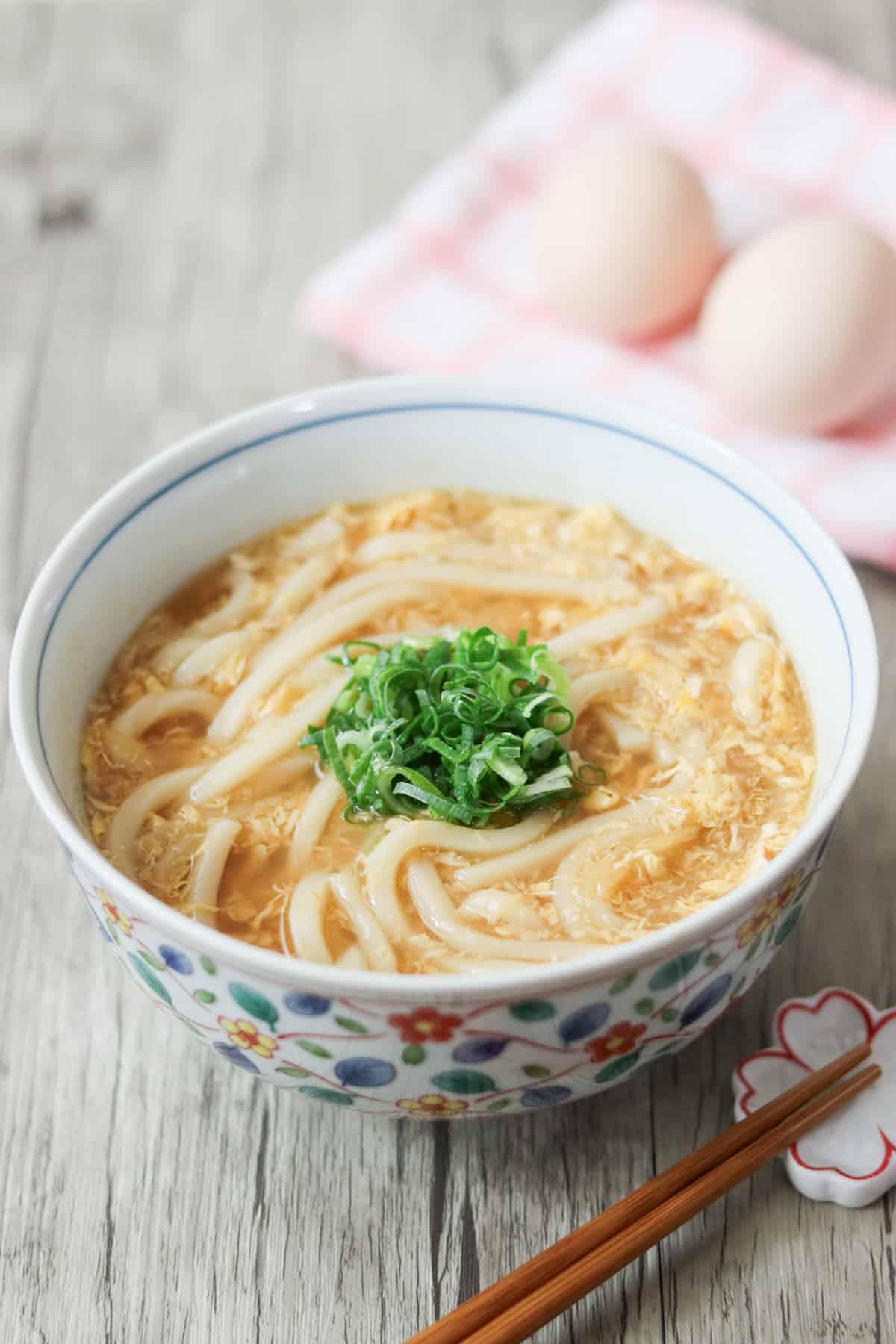
Jump to:
What is Tamago-Toji Udon?
Tamago-Toji Udon is a udon noodle soup made by pouring beaten eggs into dashi broth seasoned with ginger and Japanese seasonings. In most cases, it is thickened with starch. "Tamago" means eggs, and "Toji" refers to enveloping ingredients. By adding beaten eggs at the end of the cooking process, you can enjoy udon noodles with a fluffy texture from the eggs.
It is often enjoyed in Japan during cold winters or when one has caught a cold, as it is nutritious and warming. The combination of dashi and eggs is known to pair well and can be found in various Japanese dishes like Chawanmushi (savory egg custard), Dashimaki Tamago (rolled omelet with dashi), and Kakitamajiru (egg drop soup). Once you try it, you will be captivated by its flavor.

What ingredients can be added besides eggs and ginger?
The primary ingredients in this dish are eggs and ginger, but you can also add other ingredients. Common additions include kamaboko (fish cake), shiitake mushrooms, enoki mushrooms, tempura bits, aburaage (deep-fried tofu), and chicken.
However, since it is a dish meant to highlight the flavor of the dashi broth and eggs, it is recommended to use only a small amount of additional ingredients or none at all. Keeping it simple without overwhelming it with too many extras will result in a more delightful experience.
Amount of bonito flakes used
Typically, Japanese udon broth is prepared using a large amount of bonito flakes (katsuobushi) to enhance the flavor. Kake Udon, Kitsune Udon, and Tanuki Udon are the best examples.
However, this dish doesn't necessarily follow that tradition. This is because it aims to achieve a balance with eggs. I recommend using standard dashi, similar to that used in miso soup.
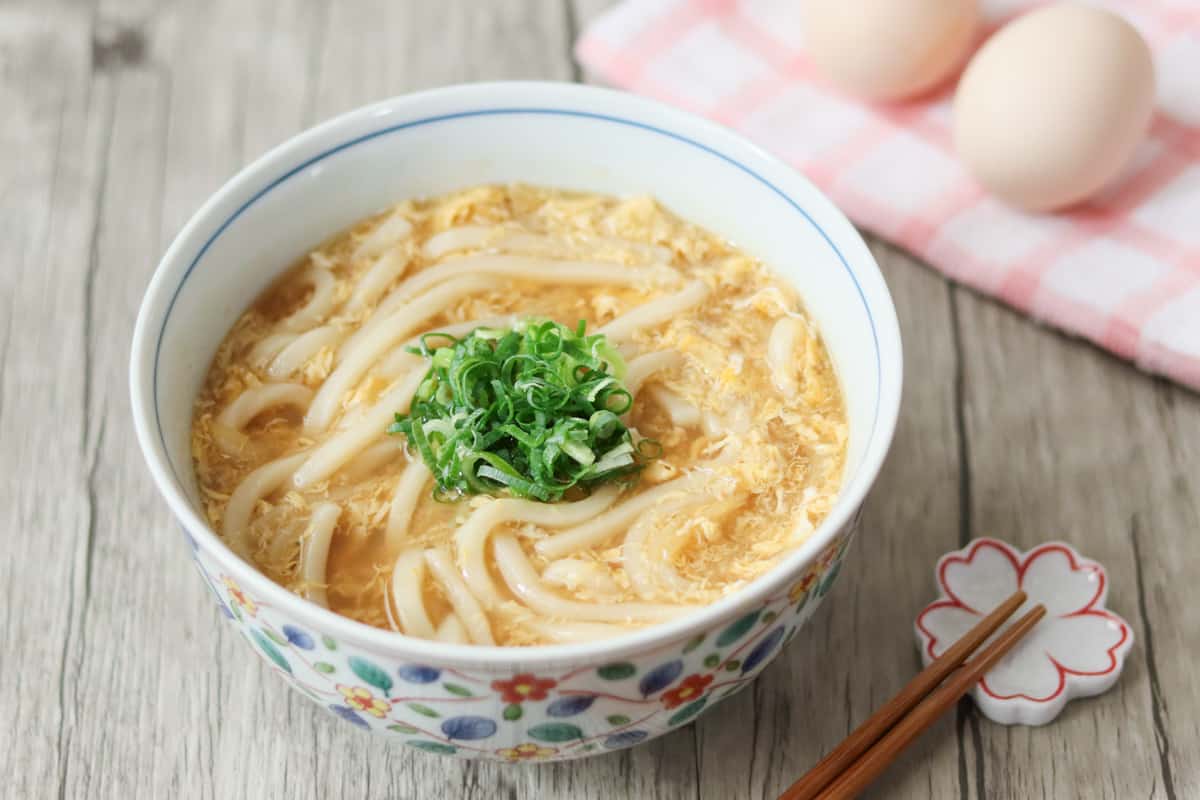
Ingredients
- 1 serving udon noodles (fresh, dried, pre-cooked, or frozen)
- 0.18 oz ginger
- 1 green onion / scallion
- 1 egg
- ½ Tbsp potato starch or corn starch
- ½ Tbsp water (for the starch)
Bonito Dashi:
- 1 ½ cups water
- ⅓ cup bonito flakes (katsuobushi)
Seasonings:
- ½ Tbsp mirin
- ¼ tsp salt
- 1 Tbsp light soy sauce (regular soy sauce can be substituted)
Step-by-step instructions
🕒 Total 25 mins
If you already have bonito dashi, start from step 3. In this case, use 1 ¼ cups (300ml) of your dashi per serving.
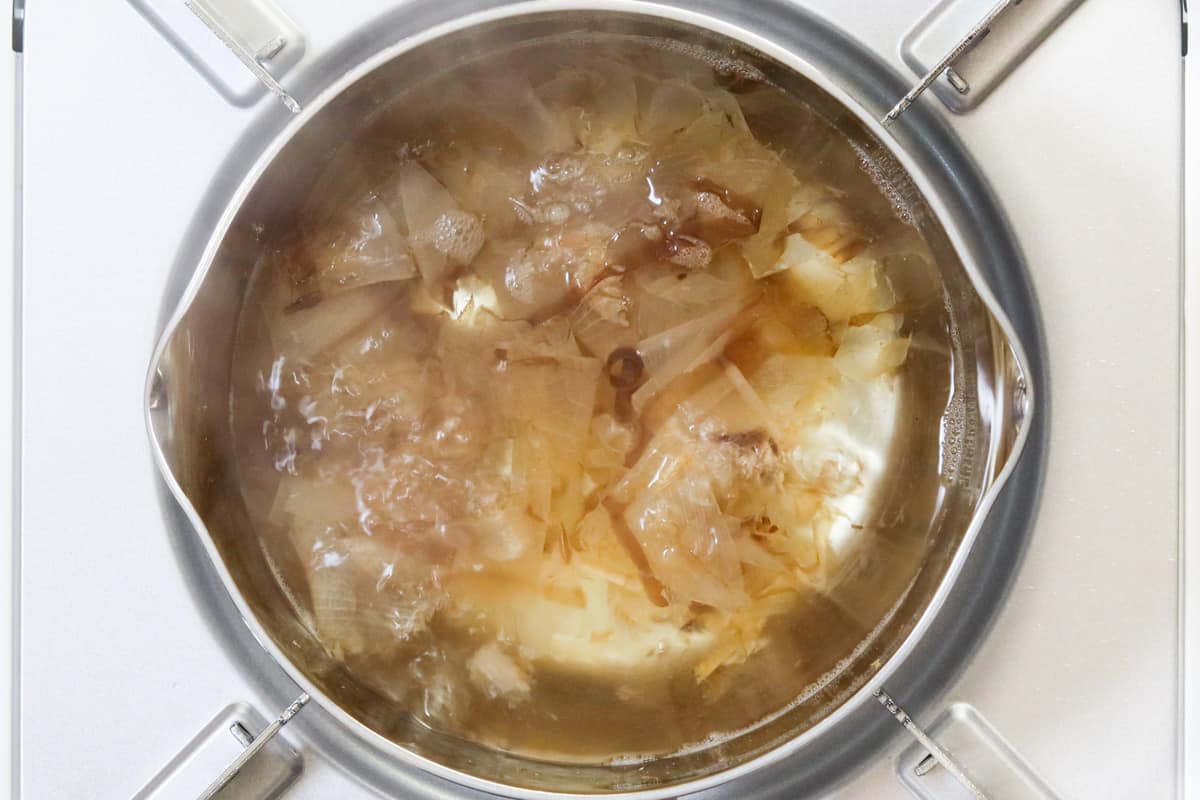
Step 1
Put water in a pot and bring it to a boil. Once boiling, reduce the heat to low, add bonito flakes, and let it simmer for 2 minutes.
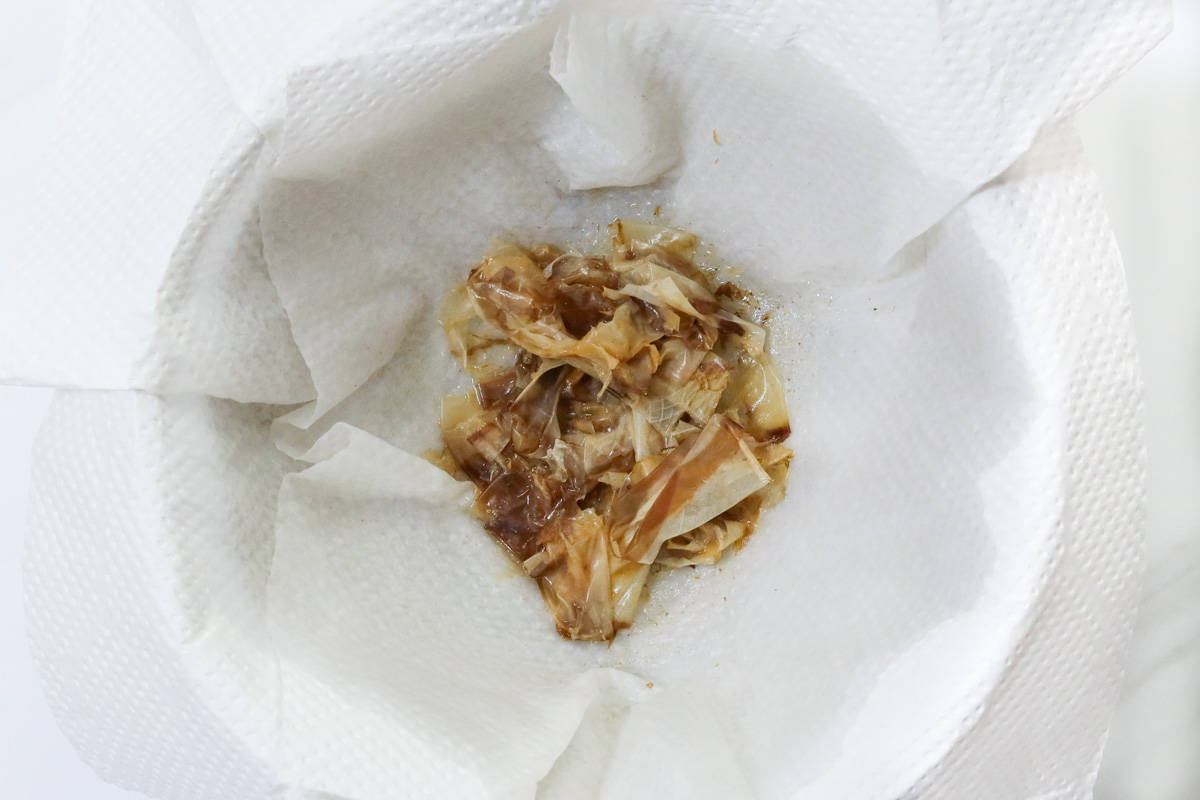
Step 2
Turn off the heat and strain the mixture through a sieve lined with paper towels or a cloth (such as cheesecloth). Alternatively, if you don't mind having fine bonito flakes remaining, you can simply use a fine-mesh strainer. Bonito dashi is now ready.
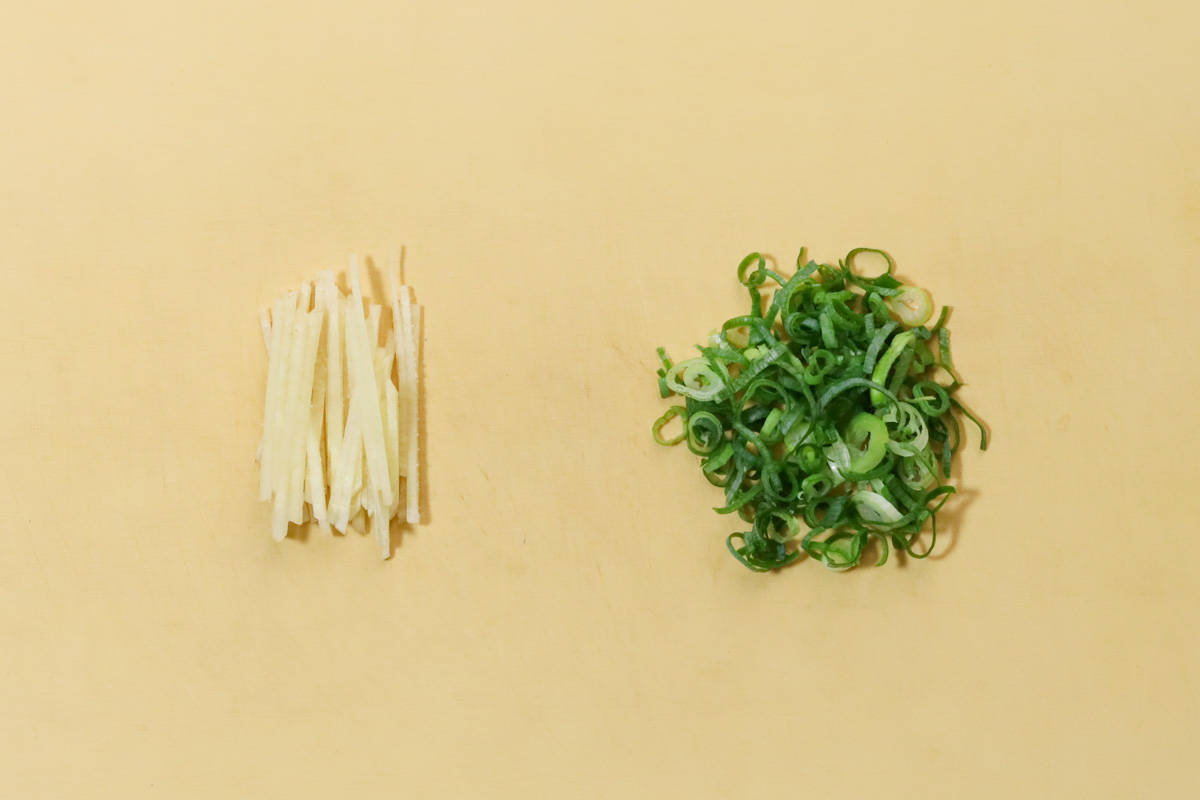
Step 3
Peel ginger and cut it into long, thin strips. Thinly slice green onion.
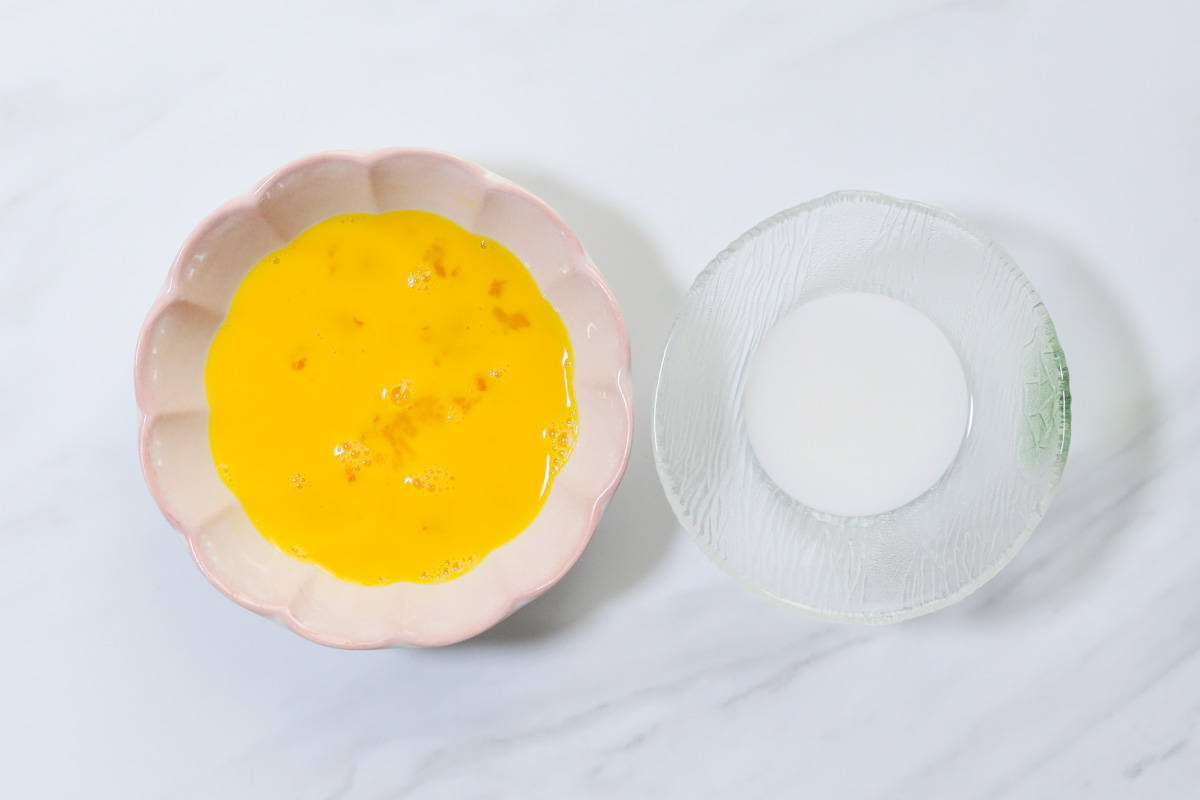
Step 4
Crack egg into a small bowl and beat it. Mix starch with water in a small bowl.
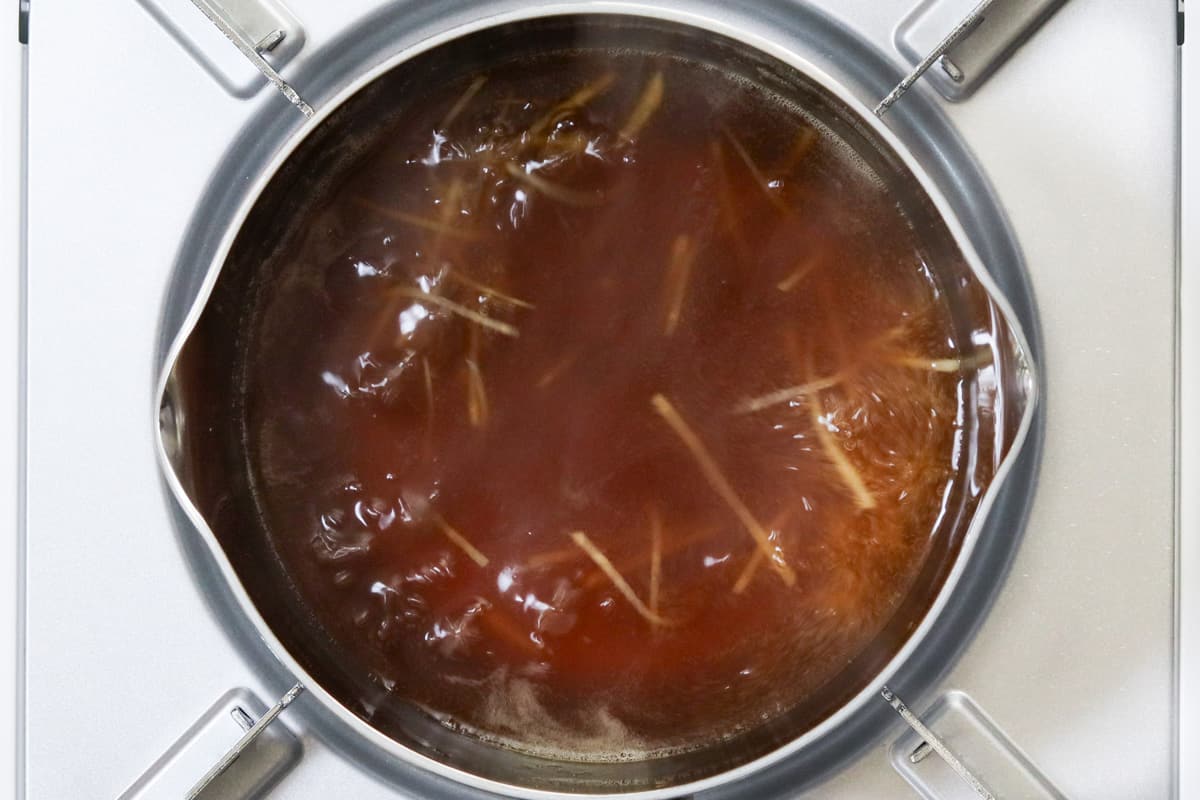
Step 5
Return the dashi to the pot, add the shredded ginger and seasonings (mirin, salt, light soy sauce), and bring it to a boil. Once boiling, gradually add the dissolved starch, stirring to blend. Continue simmering briefly to eliminate the powdery texture of the starch.
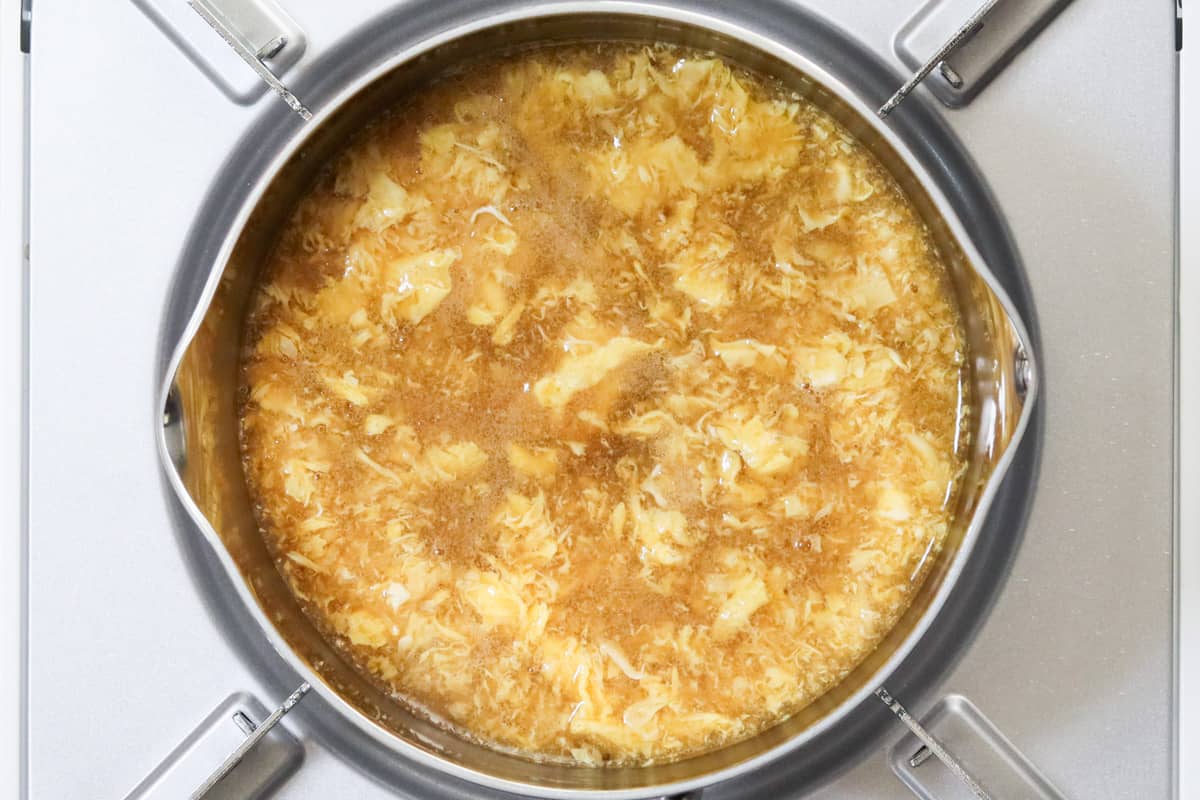
Step 6
Gradually pour the beaten egg into the pot while ensuring even distribution. Once you are certain that the egg mixture is cooked, stir it.
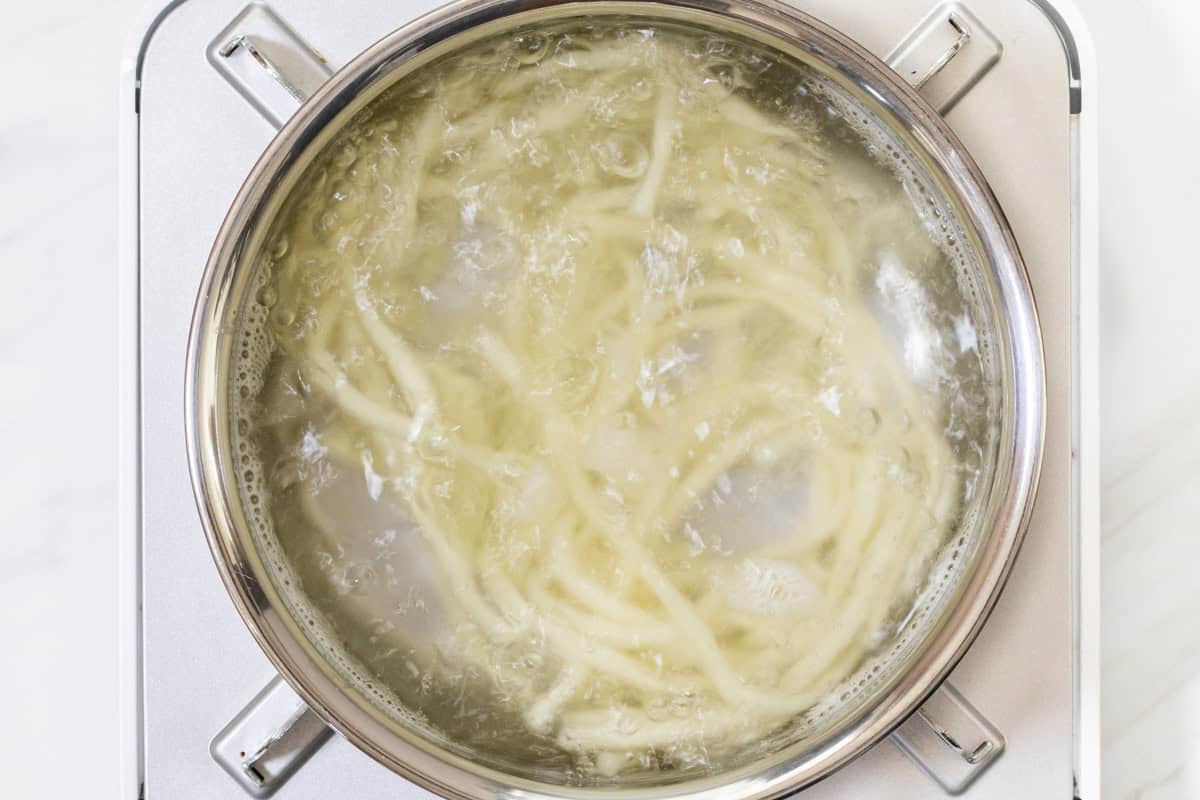
Step 7
When using fresh, dried, or pre-cooked udon noodles: Boil the udon noodles according to the package instructions. Once cooked, drain them in a colander.
When using frozen udon noodles: Lightly sprinkle water over the udon noodles. Then, place them on a microwave-safe plate, cover with plastic wrap, and microwave on high (1000W) for about 2 minutes. You can also cook them by boiling, just like the other types of udon noodles.
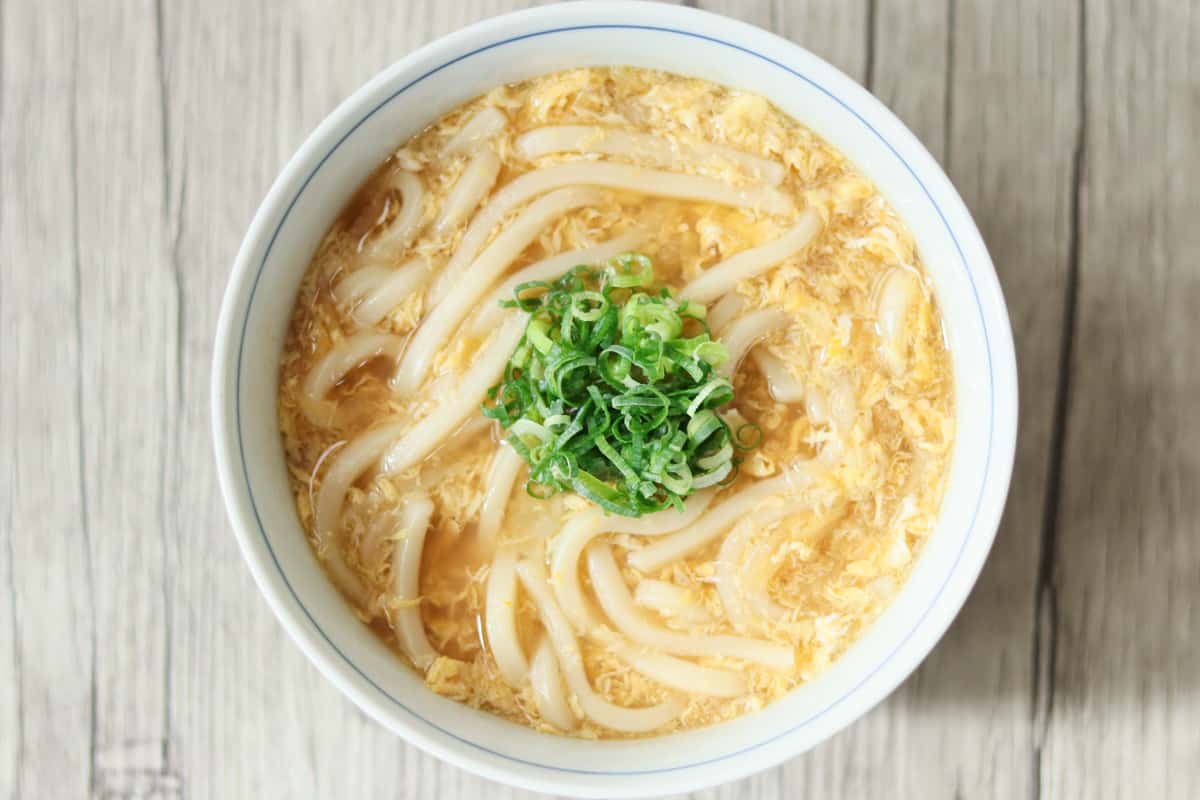
Step 8
Place the udon noodles in a bowl and pour the liquid mixture (udon soup) over them. Loosen the udon noodles with chopsticks and top with green onions.
To Store
You can store it in the refrigerator for up to 2 days. However, it is recommended to combine the udon noodles with the udon soup just before eating because once cooked, the udon noodles lose their firmness.
Tips on how to make
- The beaten egg should be poured into the pot gradually and evenly. This will prevent the egg mixture from clumping together and create a fluffy texture.
- After pouring the beaten egg into the pot, make sure it has set before stirring. Stirring before the egg mixture is cooked will cause the udon soup to become cloudy.
Recipe Card

Tamago-Toji Udon (Udon Noodles with Egg Drop Soup)
Ingredients
- 1 serving udon noodles (fresh, dried, pre-cooked, or frozen)
- 0.18 oz ginger
- 1 green onion / scallion
- 1 egg
- ½ Tbsp potato starch or corn starch
- ½ Tbsp water (for the starch)
Bonito Dashi:
- 1 ½ cups water
- ⅓ cup bonito flakes (katsuobushi)
Seasonings:
- ½ Tbsp mirin
- ¼ tsp salt
- 1 Tbsp light soy sauce (regular soy sauce can be substituted)
Instructions
- Put water in a pot and bring it to a boil. Once boiling, reduce the heat to low, add bonito flakes, and let it simmer for 2 minutes.
- Turn off the heat and strain the mixture through a sieve lined with paper towels or a cloth (such as cheesecloth). Alternatively, if you don't mind having fine bonito flakes remaining, you can simply use a fine-mesh strainer. Bonito dashi is now ready.
- Peel ginger and cut it into long, thin strips. Thinly slice green onion.
- Crack egg into a small bowl and beat it. Mix starch with water in a small bowl.
- Return the dashi to the pot, add the shredded ginger and seasonings (mirin, salt, light soy sauce), and bring it to a boil. Once boiling, gradually add the dissolved starch, stirring to blend. Continue simmering briefly to eliminate the powdery texture of the starch.
- Gradually pour the beaten egg into the pot while ensuring even distribution. Once you are certain that the egg mixture is cooked, stir it.
- When using fresh, dried, or pre-cooked udon noodles: Boil the udon noodles according to the package instructions. Once cooked, drain them in a colander.When using frozen udon noodles: Lightly sprinkle water over the udon noodles. Then, place them on a microwave-safe plate, cover with plastic wrap, and microwave on high (1000W) for about 2 minutes. You can also cook them by boiling, just like the other types of udon noodles.
- Place the udon noodles in a bowl and pour the liquid mixture (udon soup) over them. Loosen the udon noodles with chopsticks and top with green onions.
Notes
- If you already have bonito dashi, start from step 3. In this case, use 1 ¼ cups (300ml) of your dashi per serving.
- You can store it in the refrigerator for up to 2 days. However, it is recommended to combine the udon noodles with the udon soup just before eating because once cooked, the udon noodles lose their firmness.





Leave a Reply